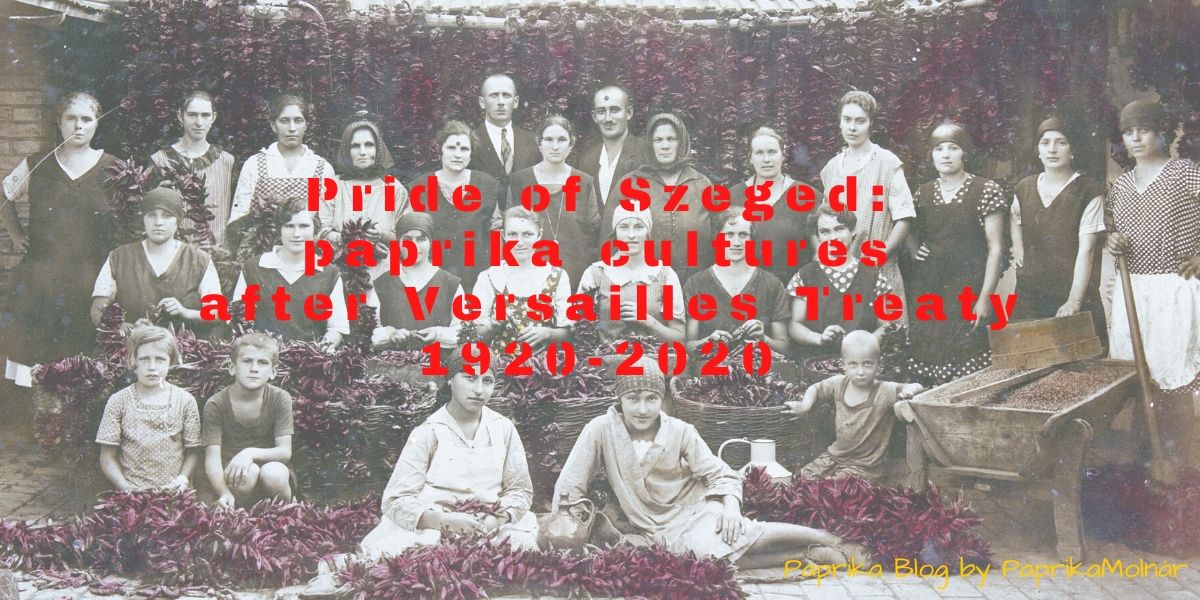4 June 1920 was a particularly dark day in the history of Hungary. Exactly 100 years ago on this day Hungarian politicians signed the Versailles Peace Treaty (known in Hungary by Trianon Treaty) that finalized Hungary’s fate after the lost war. The Treaty was unjust and exaggerating: it tore country, nation, property and families apart. It had unforeseeable consequences: it completely disrupted economy, infrastructures and institutions. It disrupted organic economic relations within paprika industry also.
Severe punishment after lost war
Most of us have a clear vision of how the country fell apart and became but one-third of its original size as a result of the Versailles Treaty that closed WWI for Hungary. The country had been part of the Austro-Hungarian Monarchy, on the losing side of the war and as such it faced huge price and severe punishment. The biggest price was the loss of two-third of its original territories with ten million people to recently emerging countries with strong nationalist discourse and hostile attitude to Hungary. The biggest loss was Transylvania, the richest and biggest, with almost 100% Hungarian Székelyland in the middle, was the price the Rumanian political lobby received for war participation. Czechoslovakia and Yugoslavia (Croatian, Serbian and Slovenian areas with Trieste today) had the second biggest gains in the Treaty. The British and French politicians clearly disregarded the 3 million native Hungarian speakers that came under openly hostile power. A total misjudgment and wrong viewpoint that led to systematic social and political displacement of the Hungarian population in Rumania and Czechoslovakia. The Treaty of Versailles, the territorial loss and disruption, continues to be an important theme in Hungarian politics.
Versailles Treaty, Szeged and paprika
Our native city Szeged from almost central position in the Austro-Hungarian Monarchy became a border town in the new Hungary with extensive rural areas, land and population, becoming part of Yugoslavia. This totally changed Szeged prospects. It lost for decades its economic potential. A local saying: how could Szeged become a fully thriving and developing town now that it is no longer a stop along a busy road but an end station?
How does this relate to paprika, one of the major economic sources of the city at this time? Since 1890 the Szeged paprika region was slowly expanding southwards and eastwards: more and more people started growing paprika in what is Horgos, Martonos, Ada, Kaniza and Adorjan today in Serbia and sold their paprika garlands in the Szeged market. Other growing areas developed near Arad and Timisoara in what is Rumania today. With the Versailles Treaty these areas came under new countries and their relationship with Szeged were terminated overnight.
The survival instinct and people’s need to make a living is always very strong, and the communities of Horgos, Martonos, Ada and Kanjiza soon built their own production facilities, mills and markets. People there created their own customs, paprika varieties and brands and thousands of families have been earning a living from growing or processing paprika since then. 100 years later the growing area in Serbia is slowly decreasing but still strong and proud.
Tetszett a cikk? Ha szeretne még paprikás és fűszeres témában, heti rendszerességgel cikket olvasni, hírt kapni az ÚJ paprika elkészültéről, iratkozzon fel hírlevelünkre. Subscribe to our Blog and enjoy our Paprika Poster.







